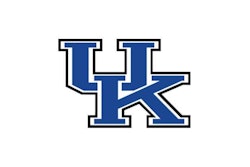At what point does there become a need for government to step in and take some sort of authoritative role?
Is Big Brother watching? Since the publication of George Orwell's Nineteen Eighty-Four, the idea that individuals' right to privacy could be threatened by an intrusive government is still all too real. But, at what point does there become an all-too-real need for government to step in and take some sort of authoritative role?
Government officials don't need telescreens to see us, after all. Just look around. The size of a great majority of individuals makes us stand out just fine. More than 32 percent of Americans are obese, which is twice the percentage of 25 years ago, and 66 percent of adults are overweight. The repercussions this can and is having on the health of our nation is alarming. It is predicted that healthcare spending will represent 19.5 percent of the U.S. gross domestic product by the year 2017. According to the Centers for Disease Control and Prevention, a study conducted 10 years ago showed that overweight and obesity accounted for 9.1 percent of total U.S. medical expenditures. And, that's not accounting for lost productivity due to illness from overweight and obesity. With the dramatic increase of obesity over the past 20 years, imagine what that percentage is now.
So, it's not surprising that the government has taken a keen interest in Americans' fitness levels lately. In fact, government involvement in the health of our nation (finally from a preventive stance) seems to be one of the biggest current trends relating to the fitness business industry, and it is happening at all levels.
At the federal level, the Wellness and Prevention Act of 2007 (HR 853) was introduced in February 2007 by Republican Rep. Joseph Knollenberg of Michigan. The act offers companies a $200 tax credit for every employee who participates in a wellness program (which includes screenings for chronic diseases, and educational seminars on eating healthily, exercise and managing stress). Then, in July 2007, the Healthy Workforce Act of 2007 (S 1753) was introduced by Democratic Sen. Tom Harkin of Iowa and Republican Sen. Gordon Smith of Oregon. Like HR 853, the bill would provide employers a credit of 50 percent of the costs paid or incurred by a qualified wellness program (up to $200 per employee for the first 200 workers, and $100 per worker for additional employees). In addition, an employer would receive a tax credit for 10 years for establishing a new, qualified wellness program. These bills are both pending.
Tax incentives have also been proposed in at least 10 states over the past several years, including California, Hawaii, Iowa, Indiana, Maine, Mississippi, New Jersey, New York, Rhode Island and Wisconsin. The most recent of these bills (AB 1439) was proposed by California Assemblyman Lloyd Levine. His bill would give California businesses a tax credit equal to 10 percent of what they spend each year to improve the fitness of their employees, including costs of equipping, maintaining and operating a fitness facility, financially supporting an amateur athletic team and subsidizing health club memberships. Similar corporate wellness tax incentives are pending in other states, including New Jersey, New York and Indiana.
The U.S. government isn't alone in its bid to get involved in the health of its citizens. In Canada in May, a Calgary Tory MLA, Dave Rodney, representing Calgary-Lougheed, introduced a bill that would offer tax relief for annual fees of up to $1,500 per person. In 2007, a $500 fitness tax credit was introduced by the federal Canadian government, but only for children. Rodney wants the credit to apply to people of all ages.
A bill for individuals, as well as corporations, would certainly be the most desirable. The International Health, Racquet and Sportsclub Association has been involved on a grassroots level to have the Personal Health Investment Today (PHIT) bill introduced. HR 245, introduced in January 2007, by Republican Congressman Jerry Weller of Illinois, allows for the costs of physical fitness programs and exercise equipment to be paid by pre-tax health investment accounts.
Most recently, the U.S. government unveiled its Presidential Physical Fitness Award for adults. Modeled after the award for children in schools, the test involves three basic components: aerobic fitness, muscular strength and flexibility. Go to the Adult Fitness Challenge (www.adultfitnesstest.org) website, enter your scores, and find out where you rank among people of the same age.
Is Big Brother watching? It (he) seems to be; but, in this case, that's not such a bad thing.
































